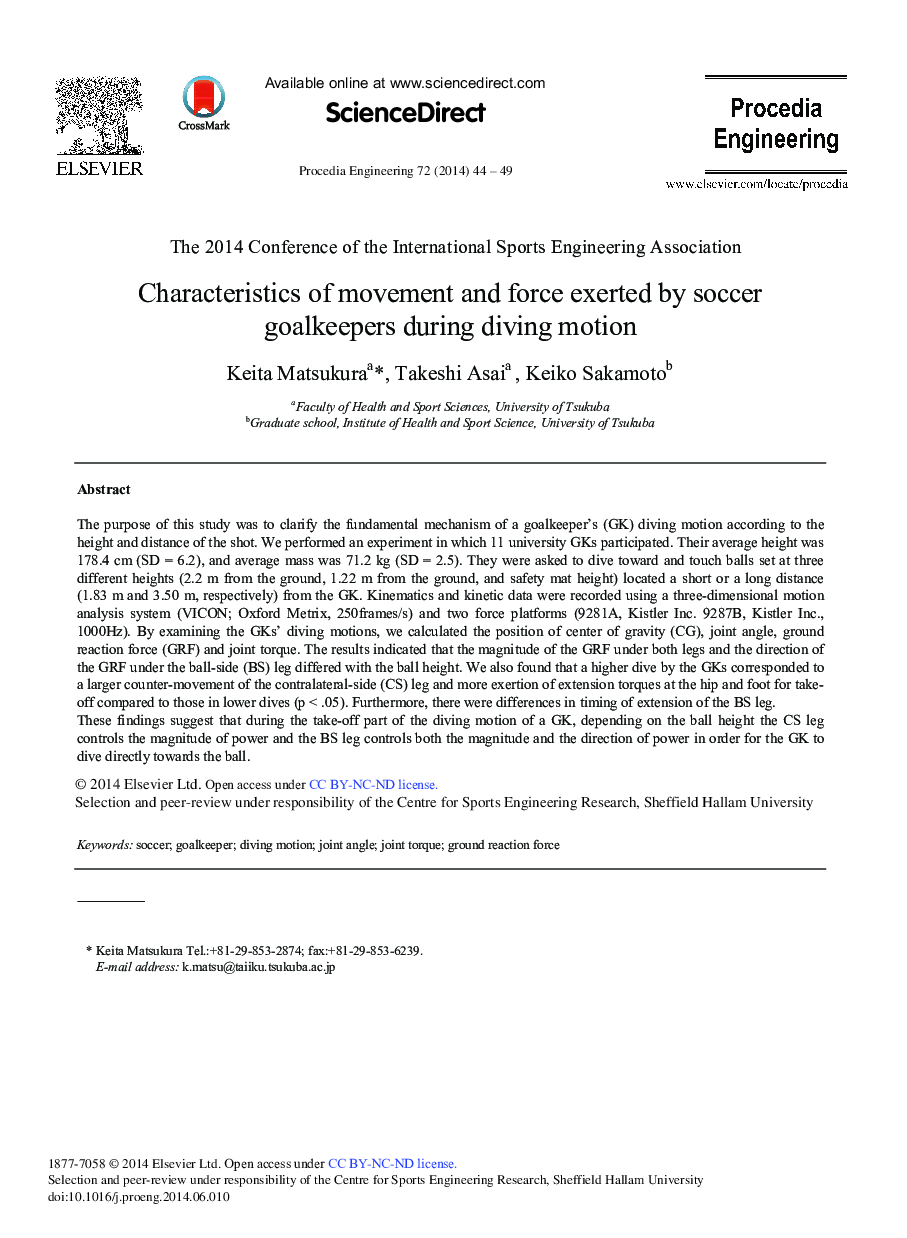| Article ID | Journal | Published Year | Pages | File Type |
|---|---|---|---|---|
| 858923 | Procedia Engineering | 2014 | 6 Pages |
The purpose of this study was to clarify the fundamental mechanism of a goalkeeper's (GK) diving motion according to the height and distance of the shot. We performed an experiment in which 11 university GKs participated. Their average height was 178.4 cm (SD = 6.2), and average mass was 71.2 kg (SD = 2.5). They were asked to dive toward and touch balls set at three different heights (2.2 m from the ground, 1.22 m from the ground, and safety mat height) located a short or a long distance (1.83 m and 3.50 m, respectively) from the GK. Kinematics and kinetic data were recorded using a three-dimensional motion analysis system (VICON; Oxford Metrix, 250frames/s) and two force platforms (9281A, Kistler Inc. 9287B, Kistler Inc., 1000 Hz). By examining the GKs’ diving motions, we calculated the position of center of gravity (CG), joint angle, ground reaction force (GRF) and joint torque. The results indicated that the magnitude of the GRF under both legs and the direction of the GRF under the ball-side (BS) leg differed with the ball height. We also found that a higher dive by the GKs corresponded to a larger counter-movement of the contralateral-side (CS) leg and more exertion of extension torques at the hip and foot for take-off compared to those in lower dives (p < .05). Furthermore, there were differences in timing of extension of the BS leg.These findings suggest that during the take-off part of the diving motion of a GK, depending on the ball height the CS leg controls the magnitude of power and the BS leg controls both the magnitude and the direction of power in order for the GK to dive directly towards the ball.
